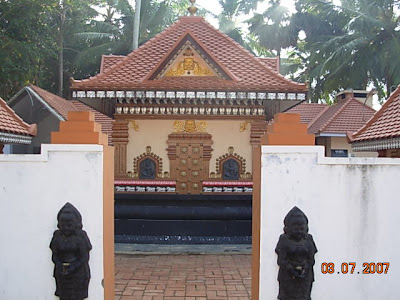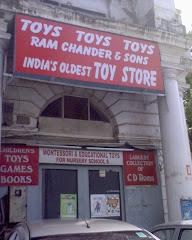SHOP GUIDE - Little Tibet in Delhi
There are many things that catch your eye while walking down the Tibetan market of Janpath. Red, blue, green yellow, black, white - colours just stare out as you as one look at any of the shops.
Earrings, wall hangings, decorative and collector's items, clothes, footwear … you name it and you have it. Life just seems so vibrant here and it becomes better still if you are feeling rich that day.
With the NDMC renovating the market, and giving it a wonderful facelift, shopping here seems even a more attractive experience. But somehow, this side of the market, which runs along the Imperial Hotel road, seems so aloof from the other, more popular side of Janpath.
With clothes, jewellery, decorative items, bed sheets stacked up everywhere, this one is a haven for the college goers who stop by at any time of the day, bargain fiercely and walk away triumphantly with a skirt, t-shirt or jeans at dirt cheap rates.
But the Tibetan market is different. Here, the prices are more or less fixed and the products on sale like handicraft items, junk jewellery and all seem much more sophisticated.
I had never really explored this side of the Janpath market. And the fact that they have a name Tibetan Market, which separates them from the other side made me wonder.
I was curious. I decided to do something more than merely feasting my eyes on the stuff in the shops.
Suddenly, looking at the bustling market, I somehow wanted a little peek into the lives of these Tibetans who have made this country their home. Little did I know that I had just opened up a chapter full of memories.
Memories galore
I happily walked past noticing the 26 brand new looking showrooms, which were just a few months' back small shops. The little shack like shops were now chic A/C showrooms.
Amongst this row of shops, I chanced on Shop No 12, a small shop which was not closed with any glass doors and just seemed little out of place.
I peered in and somewhere saw a frail, white haired lady busy working on some beads. In the open shelves of the shop were lined up countless brass items.
The little shop was home to plenty utensils, bowls, cups, saucers and decorative items. And in a small glass table were kept tons of different beads. Some were made into earnings, necklaces or were just kept like that.
The lady kept doubtfully looking at me while I was inspecting the shop. I asked her if she would tell me a little bit about the shop and the market. "Lets see how much I can tell, you anyway sit," was the response.
81-year-old Doma was all of 18 when she had first come to India from Tibet. "Along with others, I also used to sit on the footpath with all the stuff I had to sell.
Gradually, Britishers started noticing our stuff and our sale increased. Finally we were provided small shafts in the shops where we could keep everything. But still there were no pucca shops.
I am so happy that they have renovated the market. I would have been happier if they had done it two years back," says the dear old lady. It was only later I discovered that Doma is right now the only member in the market who is still running the shop after all those years.
In all the other shops, the new generations have taken over. This probably explains why Doma's shop still looks distinctive in its own way. It is clear that change is what she is not willing to accept. And considering her age and life, I wouldn't blame her.
"I don't do very good business because I don't get into bargaining and stuff like that. I have fixed a price and sell my stuff at that only," is what the lady tells me. Probably that explains why the shop is not air conditioned.
But the charm of Shop No 12 lies in the antique look it still wears. Somehow modernization has not crept into its walls, products and most importantly the owner. Doma has clearly not changed with the changing needs of people but that seems to be her success mantra.
Home away from home
The skin is different, the eyes speak a distinct language, the accent is quite characteristic. 'Woh toh chinki hain,' - that's probably how any one of us would react looking at these Tibetan shop owners.
But despite these differences, these people insist that they are now proper Indians and more specifically Delhiites. Doma is perhaps the most expressive of all.
"Our faces might resemble Chinese but our hearts are very much Indian. I feel somewhere we have a similarity in mythology and all. It's now so many years that I have been in Delhi and this is home to me."
And for the younger ones who have grown up in Delhi seeing the Tibetan market flourish, Delhi is where they belong to. With perfect Hindi and English and bits and pieces of the foreign languages, these people are linguists in their own rights and have adapted very well to the situation.
They inform me that they built a small community of their own in Laxmi Nagar. Here, they have 26 houses together where they live with their families. To give a homely feel they have also built a Buddhist temple.
Back to business
Originally these shopkeepers might belong to a different country but they are also a part of the rich Indian heritage which so proudly makes its presence felt across the globe.
So while Janpath is a must-visit on the travelogue of a foreign tourist, the goods from these markets are exported worldwide.
"Our clients come to India once in a while, take designs from here, show it in their own countries at fashion shows, shops etc and then do business there. Now, a lot of business is done over the internet too," says D.R. Lama of Shop No 18, which exports specially designed jewellery.
The survival instinct in an alien country has led these shopkeepers to such a thriving business which India can now be proud of. Their products are sourced from all throughout the country and some of them have also set up their factories where they manufacture their own stuff.
'Survival of the fittest,' is that what strikes you now?













































